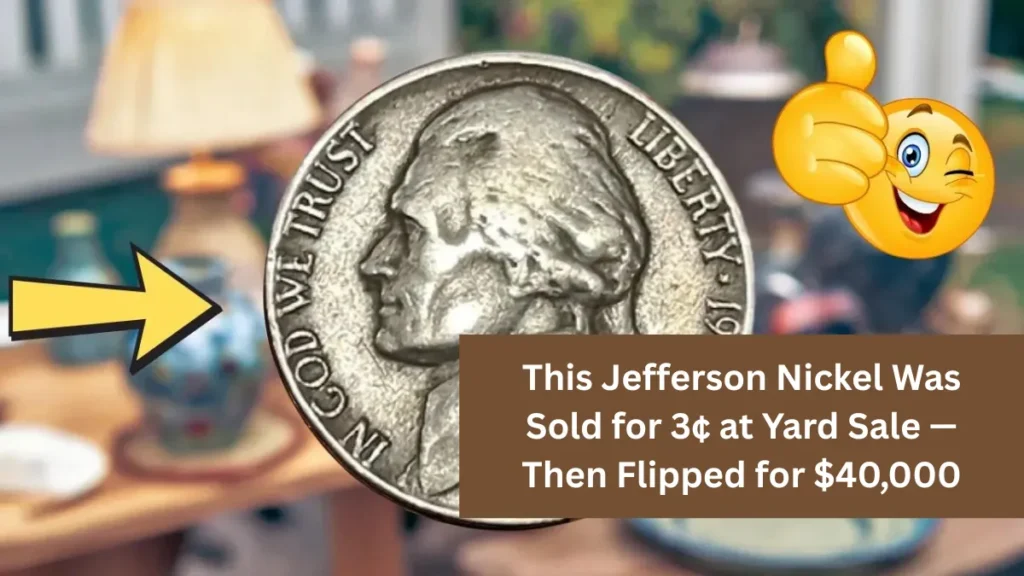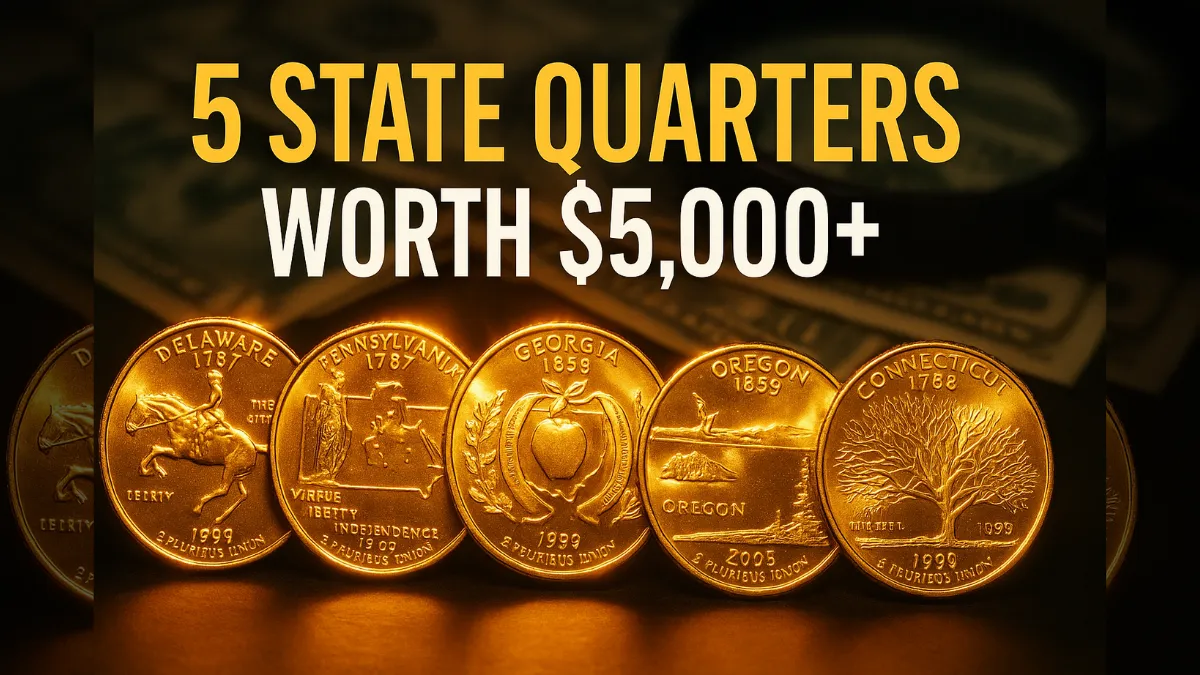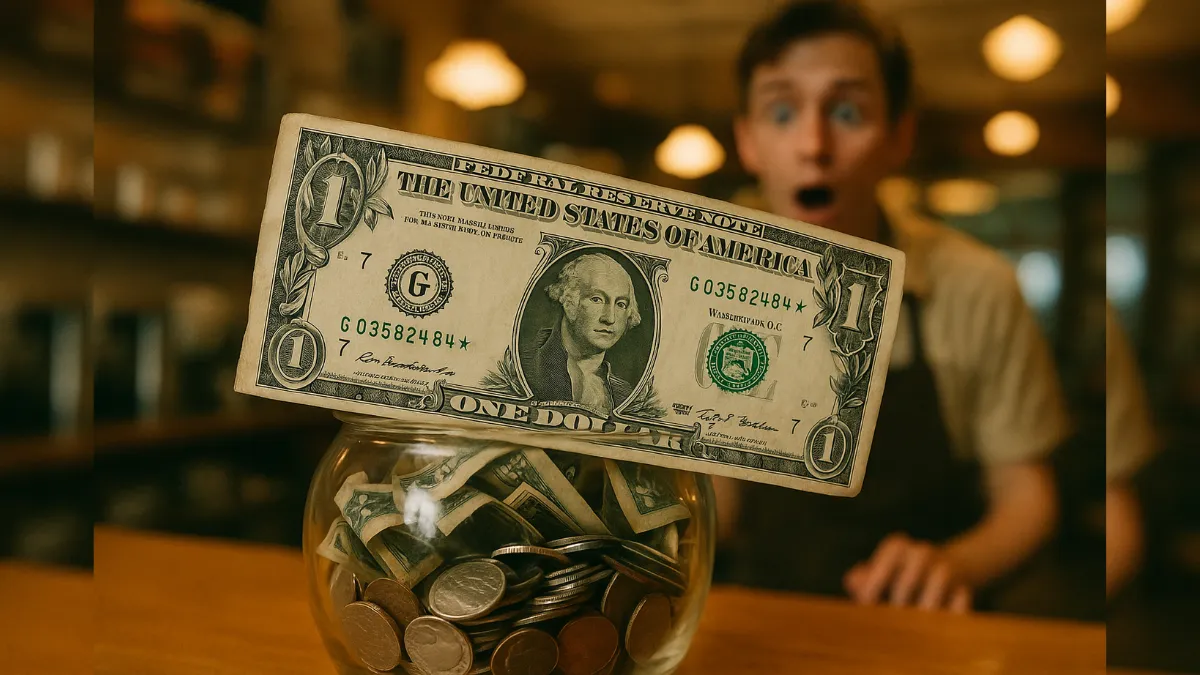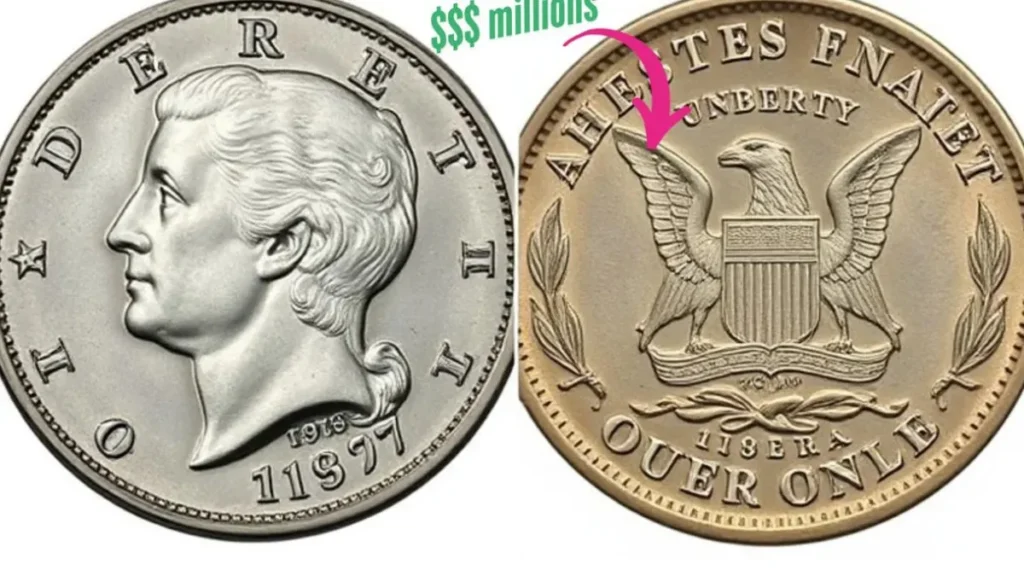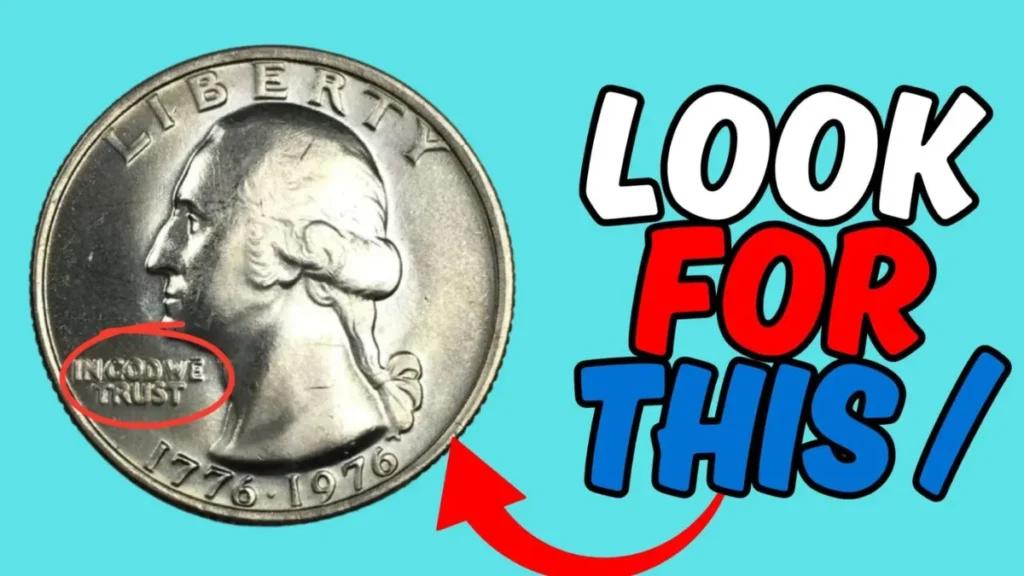Imagine purchasing a seemingly ordinary coin at a yard sale for just 3¢, only to discover it’s worth a staggering $40,000.
Picture buying what appears to be an average coin at a garage sale for only 3¢—only to later find out it’s valued at a whopping $40,000. This is the incredible story of a rare 1939 Jefferson Nickel that went unnoticed for years due to a unique error. Featuring a rare “D/S” mint mark, this coin transitioned from being pocket change to becoming a highly sought-after collector’s treasure.
For coin enthusiasts and collectors alike, this tale is a dream come true—a real-life example of how even common-looking coins can be hiding immense worth. Whether you’re browsing a yard sale or flipping through old change, you never know when a rare find might emerge. Let’s delve into how this particular Jefferson Nickel turned into a small fortune.
Discovery at a Yard Sale
At an ordinary yard sale, someone picked up a Jefferson Nickel for a mere 3¢, unaware of the hidden gem they had found. It looked like any other circulated coin to the casual observer. But for someone with numismatic experience, it stood out as a coin of special importance.
What made this 1939 nickel extraordinary was a rare error: a doubled mint mark, where the Denver (D) and San Francisco (S) marks both appeared. This unusual feature, paired with its excellent “uncirculated” condition, made the coin extremely desirable. Collectors had been on the lookout for this type of error coin for years, never expecting one to appear casually among loose change at a yard sale.
This find illustrates just how surprising coin collecting can be. Seemingly regular coins might actually hold significant value. It’s all about having the right knowledge and a sharp eye. For collectors, discovering coins like this is more than luck—it’s the excitement of the hunt that fuels the passion.
Flipping the Coin for $40,000
The buyer, intrigued by the coin’s features, had it assessed by a numismatic expert. It was quickly identified as a rare variety featuring the “D/S” mint mark error—where the coin was struck using both Denver and San Francisco mint marks. This mistake during the minting process gave the coin its distinctive and valuable identity.
Such minting errors are extremely scarce, especially in coins that remain in pristine condition. After proper grading and authentication, the nickel was sold at auction for an impressive $40,000. This dramatic jump in value showcases the unpredictability of the coin market and how rarity, demand, and condition can drive high prices.
For the buyer who paid just 3¢, the discovery was life-changing. It also reinforces the importance of verification and professional grading in determining a coin’s market value. What began as a casual purchase turned into a lucrative investment through expertise and a little bit of good fortune.
The Value of Rare Mint Error Coins
Mint error coins, like the 1939 Jefferson Nickel, can carry incredible value based on a few critical factors. These include how rare the error is, the condition of the coin, and how much demand it holds among collectors.
Coins with clear mistakes—such as doubled or overlapping mint marks—are considered unique anomalies and are often extremely collectible. In some cases, even a tiny error can raise a coin’s worth to thousands or more. These rare pieces become the crown jewels of private collections or hot items at elite auctions.
The 1939 Jefferson Nickel stands out as a prime example of this. Its rare mint mark mistake and excellent condition have made it highly desirable to numismatists. As more collectors learn about the value of mint errors, the competition to find such pieces intensifies. That demand not only increases the coin’s price but also elevates its status as a prized possession in the numismatic world.
The Thrill of Coin Collecting
Coin collecting is more than a hobby—it’s a thrilling pursuit that brings together history, discovery, and the potential for unexpected riches. Many collectors enjoy building themed collections or searching for rare years, while others love the treasure hunt aspect—browsing through flea markets, antique shops, or even old piggy banks.
What makes this hobby especially exciting is that rare finds can appear anywhere, sometimes when least expected. Stories like the $40,000 Jefferson Nickel demonstrate the potential that lies within even the most modest purchases. Collectors are drawn to that sense of mystery and possibility.
Whether you’re just starting or have years of experience, coin collecting offers an exciting blend of research, exploration, and, occasionally, rewarding surprises. It’s this blend that keeps collectors engaged and continuously searching for the next big discovery.
Bottom Line
The tale of the 1939 Jefferson Nickel is a striking reminder of how thrilling and rewarding the world of coin collecting can be. A small minting mistake transformed a coin into a piece worth tens of thousands, illustrating that valuable discoveries can happen in the most ordinary places. This story encourages collectors to stay observant, always explore new finds, and never underestimate the potential worth of a coin—no matter how common it appears.
FAQs
Why is the 1939 Jefferson Nickel valuable?
This nickel is valuable due to a rare minting mistake, where both “D” and “S” mint marks were impressed on a single coin, making it an unusual and highly desirable item for collectors.
How much was the 1939 Jefferson Nickel originally sold for?
It was purchased for just 3¢ at a yard sale, a surprisingly low amount considering its eventual value.
How did the nickel end up being worth $40,000?
Once recognized as a rare error coin, it was professionally graded and authenticated. Its rarity and condition helped it sell for $40,000 at auction.
Where can I find rare coins like the 1939 Jefferson Nickel?
Such coins may appear in unexpected places—yard sales, estate sales, coin shows, antique stores, or online auctions. A trained eye and some luck can lead to significant discoveries.
Matthew K. Ayers is a seasoned finance writer with a sharp eye for market trends and economic insights. With a background in financial analysis and a passion for simplifying complex topics, he crafts clear, actionable content to help readers make smarter money decisions. From personal finance to global markets, Matthew delivers trustworthy advice with clarity and precision.
